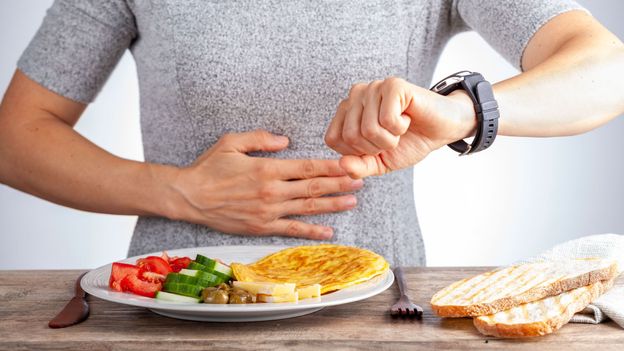Weight loss: The ideal gap between two meals to lose weight
Weight loss is an important health and fitness goal for many people. Whether you’re looking to get into shape or shed extra pounds, it’s important to understand the best strategies for successful weight loss. A key part of any weight-loss plan is understanding the ideal gap between meals that will help you reach your goals.
Prescription weight-loss drugs are also available from your doctor and can be used in combination with diet and exercise to create a comprehensive program for losing unwanted pounds. While these medications may be helpful in certain cases, it’s important to remember that they are not a substitute for healthy eating habits and regular physical activity. In addition, medications like these should only be taken under the supervision of a physician as misuse could lead to negative health consequences.
What is the ideal gap?
The ever-popular topic of weight loss has been a major focus for many years now. If you’re looking to lose those extra pounds, you need to know the ideal gap between meals. This article will discuss the ideal gap between two meals as it relates to weight loss, and how prescription weight-loss drugs can be incorporated into your plan.

Research suggests that having an ample amount of time in between meals is important when trying to lose weight. A four hour break between each meal is considered optimal; this window allows your body enough time to digest food properly before eating more. Eating too soon after a meal can lead to indigestion and feelings of discomfort, which may lead one back into unhealthy habits like overeating or snacking on unhealthy foods like chips or candy bars.
Benefits of Eating Less Often
Eating less often is an effective way to lose weight and improve overall health. When it comes to losing weight, timing is everything. Eating fewer meals can help regulate hormones and reduce cravings for unhealthy foods. With this in mind, many experts recommend eating only three meals per day with no snacks in between. But what are the benefits of eating less often?
The main advantage of cutting back on meal frequency is that it helps control hunger pangs and prevents overeating at later meals. By waiting longer between meals, people may feel more satisfied after eating smaller portions of food than if they ate more frequently throughout the day. Additionally, when done correctly, reducing meal frequency can help speed up metabolism as well as reduce blood sugar spikes after meals.
Potential Drawbacks of Long Gaps
Gaps between meals are a key part of any successful weight loss plan. It’s commonly suggested to have a gap of around three or four hours between meals in order to give the body time to process and burn off the food consumed. But what if this gap is extended, resulting in longer gaps between meals? While there can be some potential benefits, such as allowing more time for digestion and providing an opportunity for people to make healthier meal choices, there are also some potential drawbacks that should be taken into consideration.
Firstly, it’s important to note that having long gaps between meals can cause blood sugar levels to drop significantly – which may lead to feelings of intense hunger. This can lead people feeling frustrated when trying to maintain a healthy diet plan and could potentially increase the risk of them reaching for unhealthy snacks or indulging in larger portions at their next mealtime.

Healthier Eating Options During Long Gaps
It is no secret that maintaining a healthy weight is key to staying healthy. Weight loss can be difficult to achieve, but with the right information and motivation, it can be successfully achieved. To aid in this process, knowing the ideal gap between meals is important. By understanding the right amount of time between meals, one can ensure they are consuming enough calories while also creating an environment for their body to lose weight efficiently.
Personalizing Intermittent Fasting
Intermittent fasting has recently become a popular way to lose weight and maintain a healthy lifestyle. Personalizing intermittent fasting can help you optimize your results, while ensuring that the process is safe and enjoyable. This article will detail the ideal gap between two meals for those looking to take advantage of this dieting strategy in order to lose weight.
People who opt for intermittent fasting usually do so for its health benefits, such as boosting metabolism, decreasing insulin levels, and improving cognitive functions. With just a few adjustments made to your meal timing, you can make sure you are getting the most out of your intermittent fasting experience. Eating breakfast later than usual or skipping it altogether will create an extended period of time between meals which allows the body to enter into a fasted state with greater ease.

